标签:getting issues volume BMI pos tip uil bottle forward
Identify the target framerate, aim your approach on hitting that target framerate.
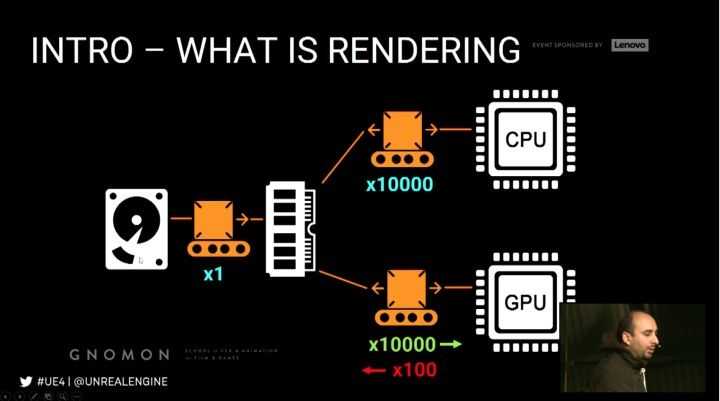
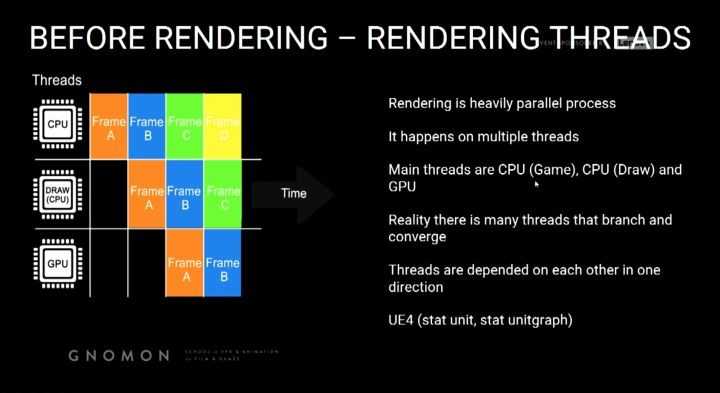
Rendering is heavily parallel process. It happens on multiple threads, main threads are CPU(Game), CPU(Draw) and
GPU, reality there is many threads that branch and converge.
UE4 Cmd (stat unit, stat unitgraph)
Before we can render anything we first need to know where everything will be,
Calculate all logic and transforms
Results: UE4 now knows all transforms of all models.
Before we can use the transforms to render the image we need to know what to include in the rendering, ignoring this
question might take rendering expensive on GPU.
Occlusion process – Builds up a list of all visible models/objects, happens per object – not per triangle
4 Stage process
Precomputed visibility answers more complex occlusion questions,
Objects occluded by other objects, divides the scene into a grid, each grid cell remembers what is visible at that location.
Dynamic Occlusion Culling checks the visibility state on every model, that is mostly run on the CPU but some parts are
GPU handled.
Occlusion Performance Implication
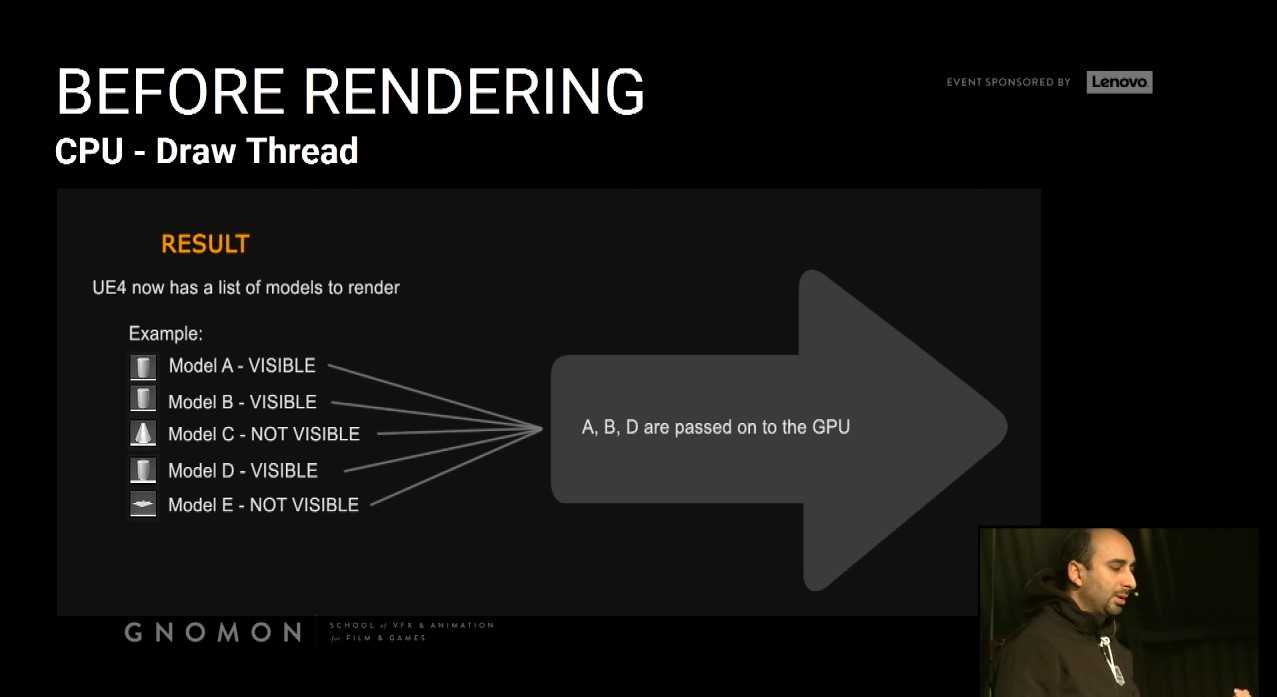
Results: UE4 now has a list of models to render.
The GPU now has a list of models and transforms but if we just render this info out we could possibly cause a lot of
redundant pixel rendering. Similar to excluding objects, we need to exclude pixels, we need to figure out which pixels
are occluded.
To do this, we generate a depth pass and use it to determine if the given pixel is in front and visible.
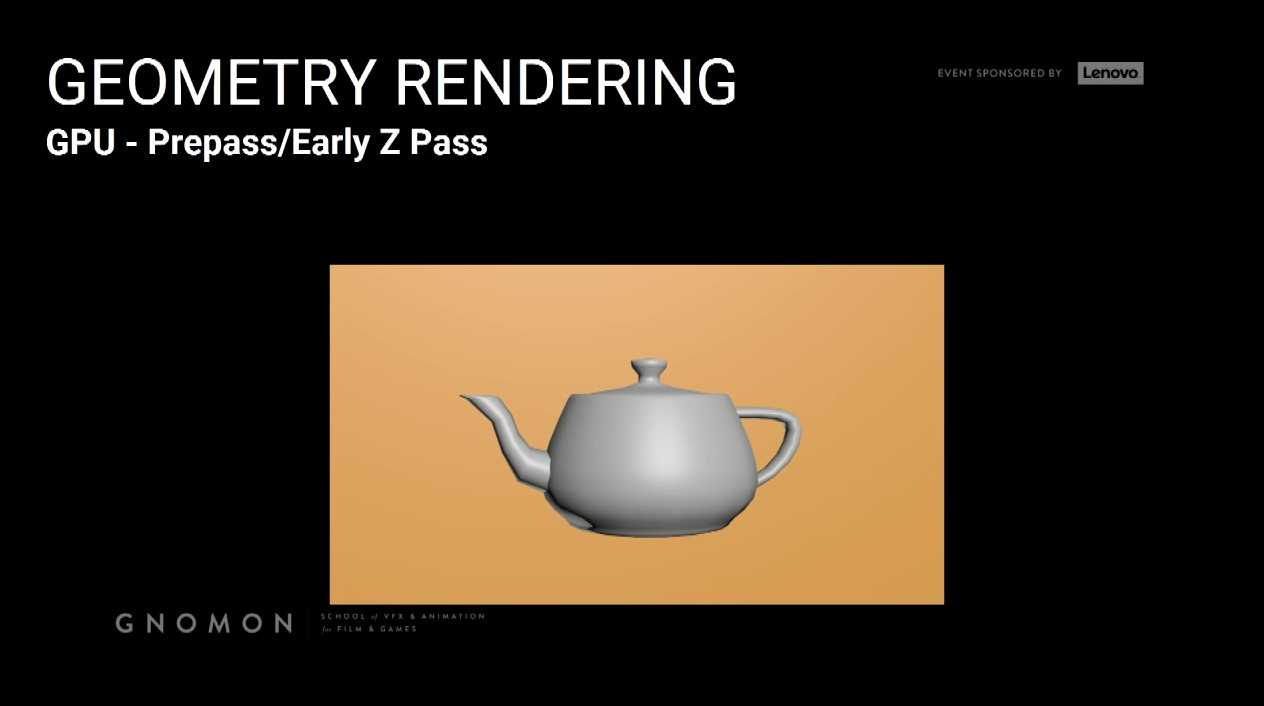
Render teapot first, then render the box.
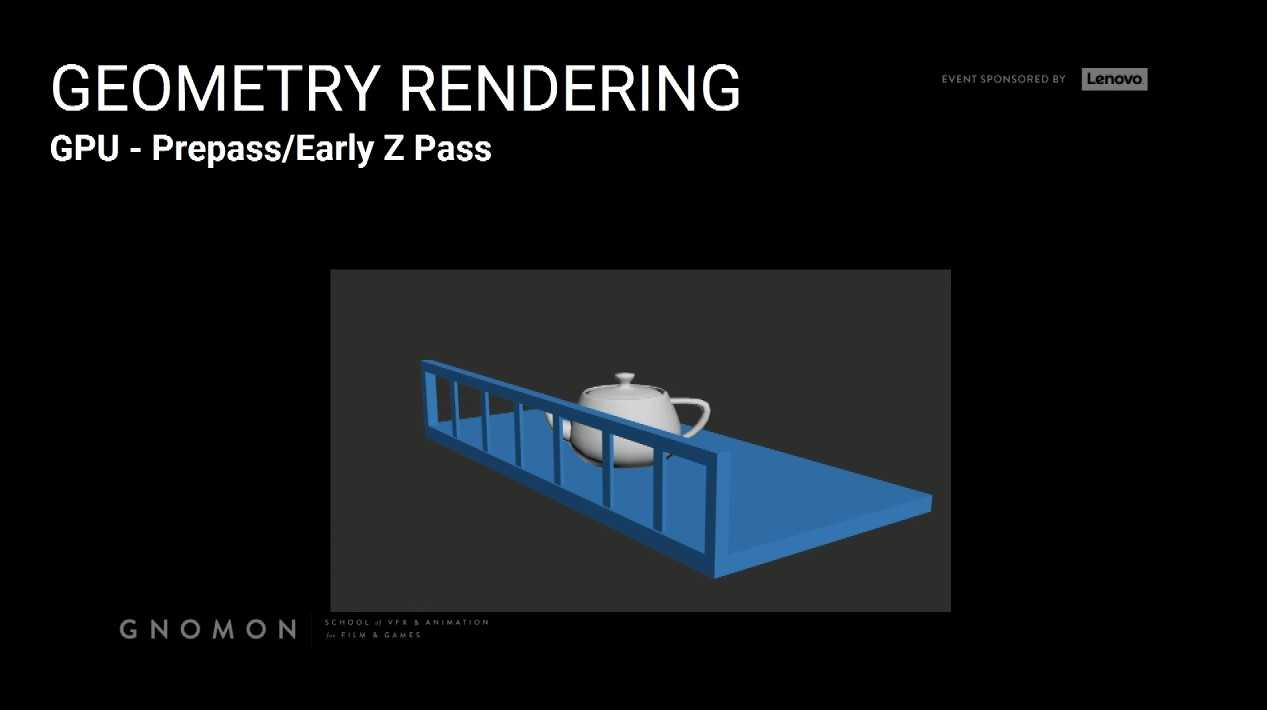
Previous strategy doesn’t work, that why we need to depend on the depth of those pixels to know if this object or this
pixel is behind in front of another object and then decide if we need to render it.
Question 1. How does the renderer associate the early-z pass with an actual object in the scene?
It doesn’t really associated object per object what it happens, it knows the position of pixel on the screen, so what it
need to render an object or a pixel it knows. Ignore it or keep it.
2,000 – 3,000 is reasonable, more than 5,000 is getting high, more than 10,000 is probably a problem, on mobile this number
is far lower (few hundred max), draw calls is determined by visible objects.
Imagination of the overhead of a draw call vs that triangles,
Copying 1 single 1GB file vs Copying 1 million 1KB files.
Drawcalls performance implications:
To lower the drawcalls it is better to use fewer larger models than many small ones. You can do that too much, it impacts
other things negatively
Good balance between size and count is a good strategy.
Drawcall is related directly to how many objects you have and how many unique material IDs you have.
Merging guidelines
Hierarchical Level of Detail
First thing processing the Drawcall
Vertex shader takes care of this process
Vertex shader is a small program specialized in vertex processing
Runs completely on the GPU and so they are fast
Input is vertex data in 3D space output vertex data in screen-space
Vertex shaders – Common tasks
标签:getting issues volume BMI pos tip uil bottle forward
原文地址:https://www.cnblogs.com/x5lcfd/p/11407650.html